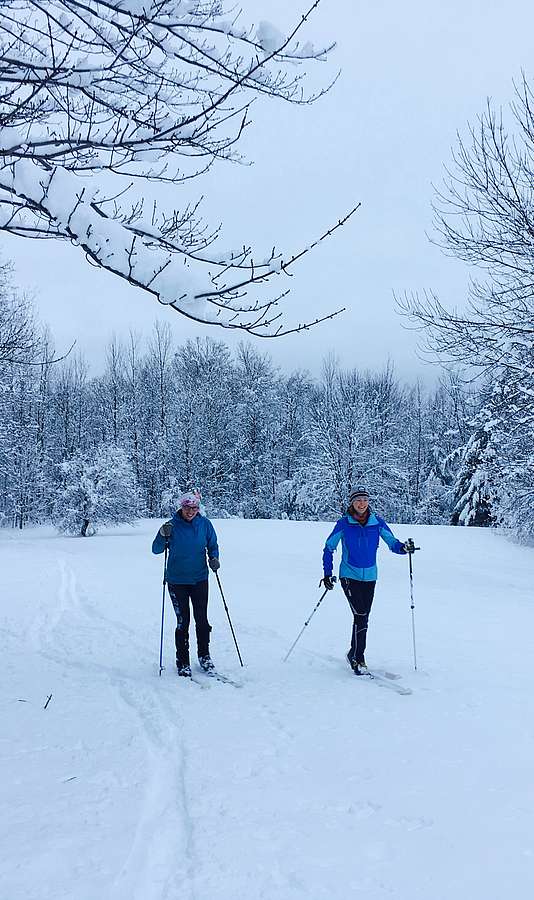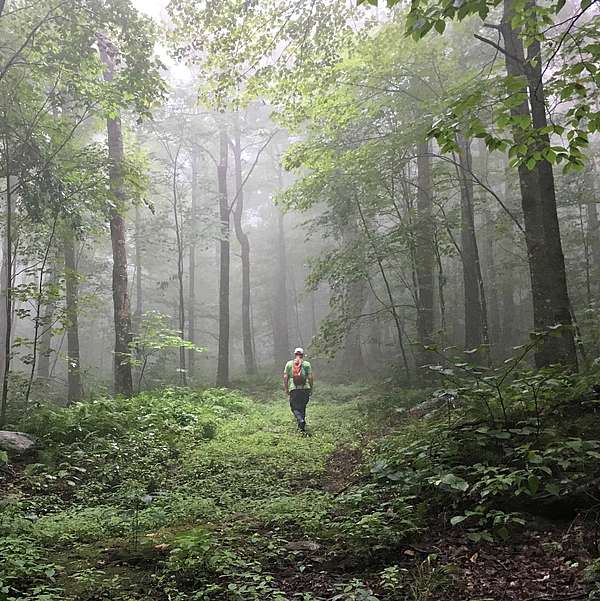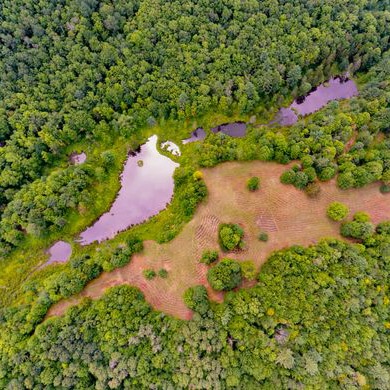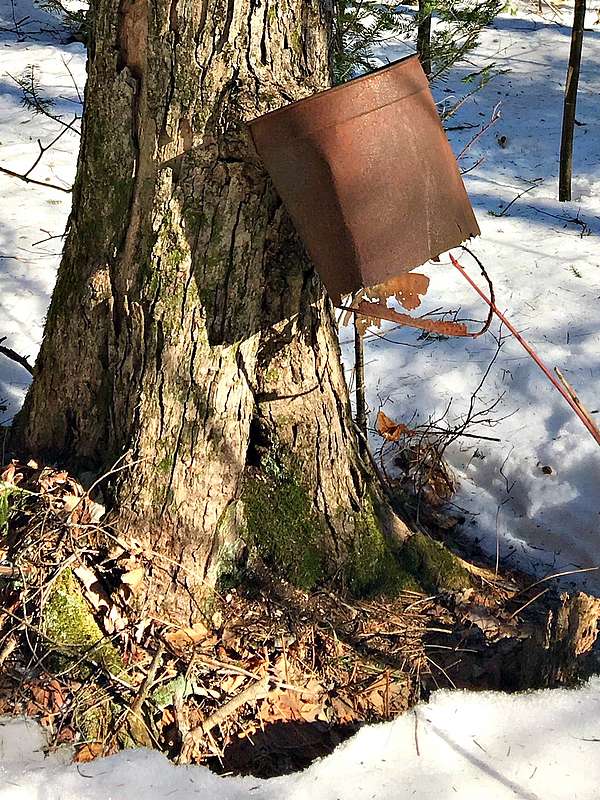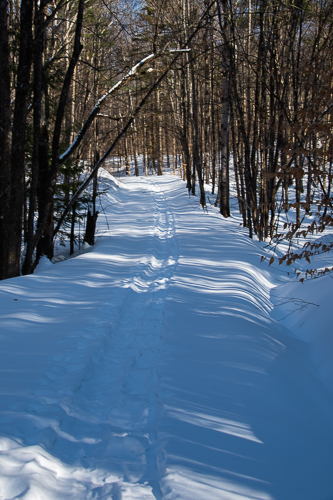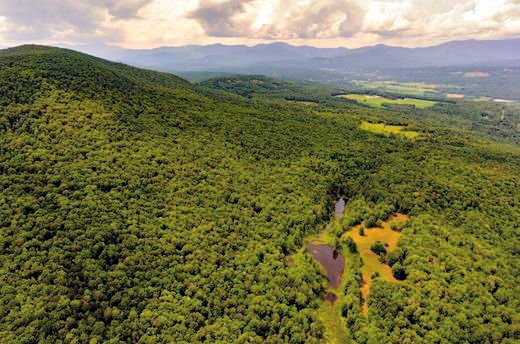What seemed impossible – the conservation of the largest remaining unprotected privately-owned forest tract in Stowe – is now within reach.
Stowe Land Trust (SLT) has received a $5 million anonymous gift made through the Vermont Community Foundation toward the purchase of the property, which was listed for sale at $9.95 million in August 2018. This donation is the largest grant from a donor advised fund at the Vermont Community Foundation in its 33 year history.
“We have an amazing, once-in-a-lifetime opportunity to conserve this outstanding property for our community,” says SLT Executive Director, Kristen Sharpless. “It is the last conservation project of its kind that could happen in our town and it is truly exceptional to have everything coming together to make it possible.”
If SLT is successful in raising the remaining 10% of acquisition costs plus project expenses and a contribution to its stewardship endowment, Brownsville Forest will be its largest - in acres and dollars - land purchase for conservation since it was founded in 1987.
“This is an incredible opportunity to protect the wild side of Stowe and a place that is beloved by many in our community." says SLT chairman, Walter Frame. “We are very grateful for the donation through the Vermont Community Foundation that is making this conservation project possible.”
There is a long history of buying large forest tracts for conservation in Stowe. These efforts include 10,000 acres of Burt Lumber Company land to Mount Mansfield and C.C. Putnam State Forests in 1979, the Town of Stowe’s purchase of the 1,000-acre Sterling Forest in 1995, and Stowe Land Trust’s protection of Cady Hill Forest most recently in 2012.
The 750 acres in Stowe’s quiet Brownsville neighborhood are currently owned by the niece and nephews of the late Genevieve Story whose husband purchased the property for her as a wedding gift in 1950. As children in the 1960s, Nancy Hughes and her three brothers remember coming up to visit their aunt, Ms. Story, and their grandmother who spent every summer in Brownsville. They have fond memories of taking walks down Brownsville Road to enjoy the views, marveling at wildlife, and picking raspberries by the beaver ponds.
According to Ms. Hughes, “Preserving the land was very important to our aunt and grandmother. After my aunt passed away in 2011, it has been our family’s hope to keep the land as is for the future and to honor our aunt’s and grandmother’s legacies. It has been a very difficult decision to sell, but now it is our family’s wish for others to enjoy it as much as we have.”
John Merrill, a founding and Emeritus director of Stowe Land Trust, recalls that conserving Brownsville Forest has also been a longtime wish for SLT.
“The Story property has been on SLT’s radar as an irreplaceable area important to our community since the organization got started. It’s terrific to be at a point now of being able to work with Ms. Story’s family to protect the property and reopen it to the public.”
The land has been posted for the past several years.
Previous to the Story family’s ownership, Brownsville Forest was a collection of hill farms, including one owned by Mr. Brown for whom Brownsville is named. In the 1930s, the Grimes family took over the Brown Farm and some of the smaller surrounding properties where they kept a dairy herd, sugared, and raised most of the food needed to feed a family of thirteen for more than a decade.
In his childhood memoir written in 2005, Ray Grimes describes his experience of arriving on his family’s Brownsville farm for the first time as a young boy in early spring.
“I thought it was the most beautiful place I had ever seen. Daffodils were in bloom all through the plum orchard. There was also an apple orchard and pear trees. Of all the places I have lived, this one has always been the one I liked the most and I still enjoy going back to the area.”
Today, Brownsville Forest’s farming history can still be seen in the remnants of crumbling stone walls, scattered sap buckets, and old plough furrows, but most of the land has long grown up into forest. That forest - along with a couple of open meadows and pristine beaver wetlands - provides critical wildlife habitat, water quality protection for Moss Glen Brook, possibilities for long-term management for timber and other forest products, and many options for public use and enjoyment.
Until it was posted several years ago, neighbors and community members long used and appreciated access to the land for hunting, horseback riding, mountain biking, cross country skiing, walking and more. Almost two miles of Class IV roads pass through the property connecting to the VAST trail and providing access to thousands of acres of state land.
Brownsville Forest is a beloved place to many in the Stowe community for its history, quiet character, remote feel, beautiful woods, and many opportunities to enjoy the great outdoors. Stowe Selectman and outdoorsman, Neil Van Dyke, has enjoyed backcountry skiing on and around the property for years.
“I believe the Story property purchase will go down as one of Stowe's most exciting and important land conservation projects,” says Van Dyke. “The area being conserved by SLT will not only protect a remote and scenic area from future development, but the land provides wonderful opportunities for recreation and outdoor exploration that help make Stowe such a great community to live in and visit."
An avid Stowe Area Birder and naturalist, Liz Lackey believes that her lifelong love of nature and wildlife got its start in the many hours she spent exploring Brownsville Forest’s woods, beaver ponds, and old pastures as a child in the 1960s. She is excited to spend more time back out on the land – which she can still walk to out the back door of her childhood home on Brush Hill - once it is conserved.
“This property is such a gem.” says Lackey. “I am thrilled that it will be protected, and I hope that it will continue to inspire similar passions for wildlife and natural places in future generations."
As part of the foothills of the vast and remote 45,000-acre Worcester Range - which includes the popular hiking destinations of Hunger Mountain and Stowe Pinnacle - conserving Brownsville Forest fits within SLT’s ongoing <link projects current>initiative to “Keep the Worcesters Wild.”
SLT’s other current efforts under this initiative include the <link projects hunger-mountain-headwaters>Hunger Mountain Headwaters Project which is being completed in partnership with the Trust for Public Land to protect 2,000 acres of forestland in Stowe, Middlesex, and Worcester, and the conservation of the <link projects shutesville>Shutesville Hill Wildlife Corridor: a collaborative effort between local, statewide, and regional conservation organizations, landowners, and the communities of Stowe and Waterbury to protect a critical wildlife corridor that connects the Worcesters to the northern Green Mountains.
All together, these efforts will raise over $10 million in order to protect almost 3,000 acres of critical habitat in and connected to the Worcesters: Vermont’s most wild and least protected mountain range.
The Worcesters have been identified by the State of Vermont and the Nature Conservancy as a highest priority area within Vermont and the region for maintaining biodiversity and an ecologically resilient landscape in the face of climate change. The purchase of the Brownsville property will also help leverage millions of additional dollars in federal Forest Legacy Program funding for forestland conservation in the Worcesters.
Once purchased by SLT, we plan to transfer the Brownsville Forest to the State of Vermont as an addition to the adjacent C.C. Putnam State Forest. It will be open and available to the public for non-motorized recreation subject to a conservation easement held by the Land Trust and a management plan which will be prepared with an opportunity for public input.
In addition to the $5 million anonymous donation through the Vermont Community Foundation, we will raise the remaining $750,000 in acquisition costs, project expenses, and a contribution to SLT’s stewardship endowment from private and public sources. The scheduled closing date is July 31, 2019. A local fundraising campaign is planned for the spring.
Questions? Contact SLT Executive Director, Kristen Sharpless, at 802-253-7221 or kristen@stowelandtrust.org
